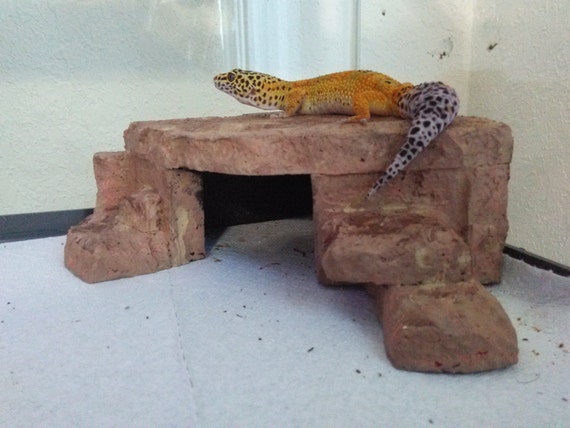

Do this gently to make sure the substrate doesn’t get completely wet. Whatever substrate you choose, make sure to keep it moist, not wet. If necessary, especially when you first set it up, you will need to mist it gently with water. For a short-term improvised solution, though, it’s a safe choice. You can check our recommended tanks here.Ī temporary solution is using paper towels. Make sure to replace them regularly, and ideally replace them with a proper substrate at some point. That’s why we always recommend going for a tank larger than the recommended 20 gallons – in those, you barely have enough space for elements like such a cave. Smaller than that, and your gecko will barely fit. Make sure you get one that’s at least 8-10 inches long and 6+ inches wide. Stacked rocks are also not suitable, as there is too much circulation.įor these reasons, it’s best to simply buy a reptile cave – there are plenty of great options available. Wood, for example, is simply not a suitable humid hide material for this simple reason – it doesn’t retain moisture. To make sure the cave retains humidity, make sure it’s not too large, the entrance is not too large (to keep circulation to a minimum), and the material is moisture-retaining. A queen- or king-sized cave, if you will. It should feel more like a queen-sized bed than like a coffin. Instead, the gecko should be able to turn around inside the cave, get comfortable. But not 2-3 times longer than your gecko – that would be too much. Choosing the cave elementįor the cave, there are two main factors: The size of the cave and its ability to retain humidity.Īs for the size, you should pick a cave that is about 2-3 times larger than your Leopard Gecko. All you need is a cave element (which you can build yourself – more on that later), a substrate to capture and retain moisture, and a good placement in the tank. Luckily, setting up a moist hide is quite easy. Now that you know exactly why you and your gecko need a humid hide, let’s get into setting one up.

However, the first priority should be to provide a cave with high moisture so the gecko can self-regulate as needed. A warm bath for 15-30 minutes can also help. That’s why Leopard Geckos naturally seek humid hides or water during shedding.īeyond making sure that there is a moist hide in their enclosure and a water dish large enough to sit in (without drowning, of course), you can also occasionally mist the gecko during shedding – especially if it seems to struggle.
#Hanging gecko hides skin
At worst, this stuck skin can inhibit blood flow to limbs or digits, which can cause serious injury. Without it, the old skin will be difficult to pull off, which can cause it to get stuck. To make this process easier, adequate humidity and moisture are needed. Once ready, in between the two layers of skin, a layer of lymph fluid is built up to further separate the old skin, so it can be more easily pulled off by the gecko. Sheddingĭuring shedding, the old skin is slowly separated from the new skin, forcing it to dry out while the new skin is developed. The key is self-regulation: just like Leopard Geckos need the option to drink if needed, they must have the option to retreat into a moist cave if they need more moisture in their skin and body. They may only actually drink once every few days with adequate moisture supply from the environment and feeder insects. Leopard Geckos, like many reptiles, are cold-blooded, and rely on their environment for regulating both temperature and hydration. Much of a Leo’s hydration actually comes from food and environment, and only a small part is from directly drinking water. To learn more about how and for what purposes Amazon uses personal information (such as Amazon Store order history), please visit our Privacy Notice.Humid hides are critical for Leopard Gecko for two reasons: keeping hydrated and for shedding. You can change your choices at any time by visiting Cookie Preferences, as described in the Cookie Notice. Click ‘Customise Cookies’ to decline these cookies, make more detailed choices, or learn more. Third parties use cookies for their purposes of displaying and measuring personalised ads, generating audience insights, and developing and improving products. This includes using first- and third-party cookies, which store or access standard device information such as a unique identifier. If you agree, we’ll also use cookies to complement your shopping experience across the Amazon stores as described in our Cookie Notice. We also use these cookies to understand how customers use our services (for example, by measuring site visits) so we can make improvements. We use cookies and similar tools that are necessary to enable you to make purchases, to enhance your shopping experiences and to provide our services, as detailed in our Cookie Notice.


 0 kommentar(er)
0 kommentar(er)
